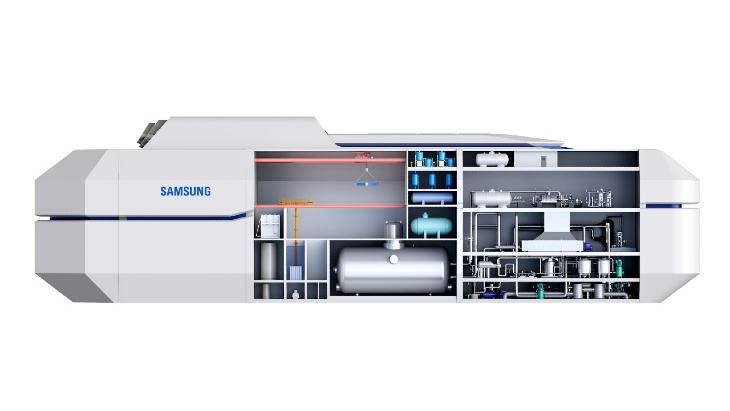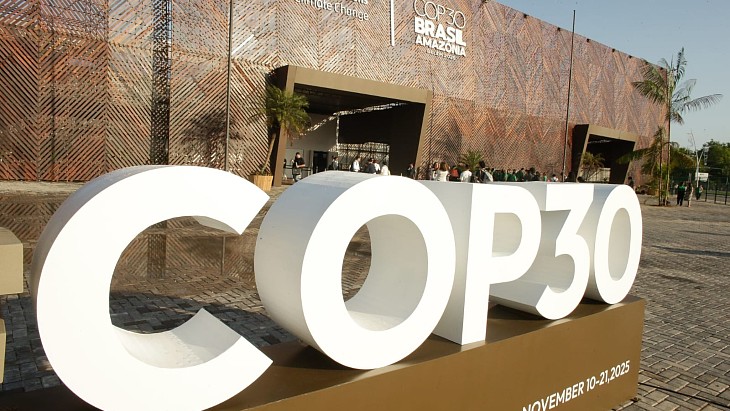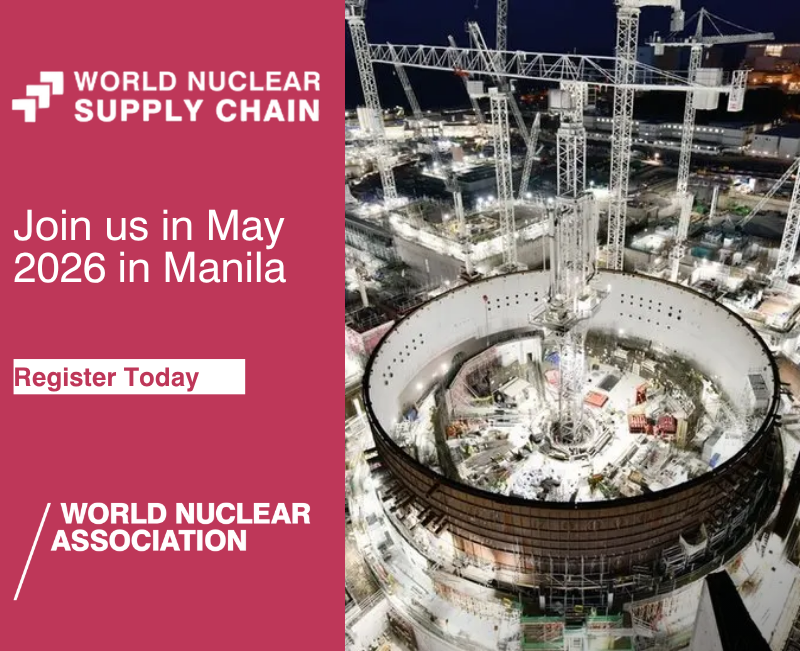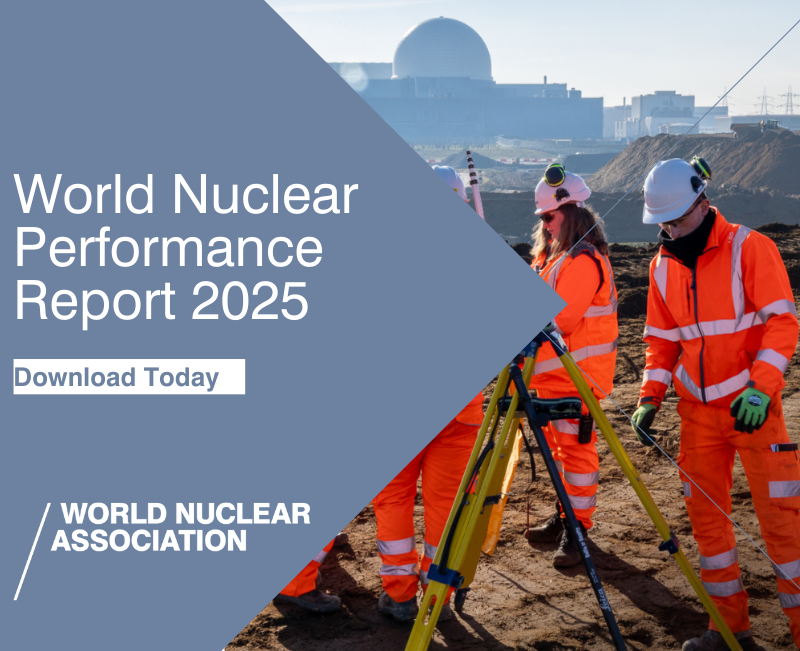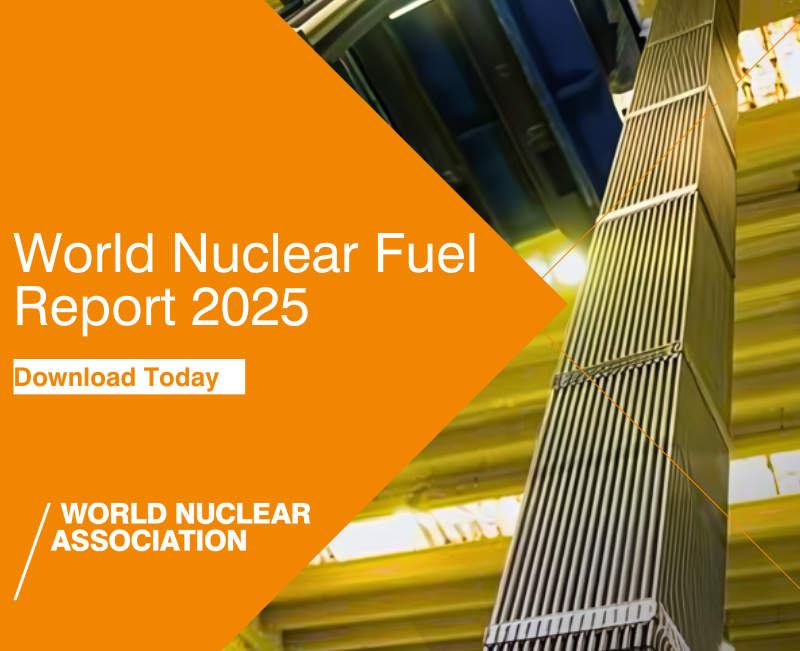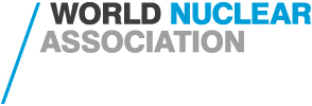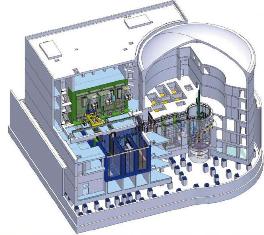 The Eur500 million Jules Horowitz Reactor (RJH) - named after the French reactor physics research pioneer - will be a 100 MWt light water cooled materials test reactor at the Cadarache site in southern France. Operated by the French Commissariat à l'énergie atomique (Atomic Energy Commission, CEA) it will replace the 70 MWt Osiris reactor, which itself took over some of the roles of the 35MWt Siloé reactor.
The Eur500 million Jules Horowitz Reactor (RJH) - named after the French reactor physics research pioneer - will be a 100 MWt light water cooled materials test reactor at the Cadarache site in southern France. Operated by the French Commissariat à l'énergie atomique (Atomic Energy Commission, CEA) it will replace the 70 MWt Osiris reactor, which itself took over some of the roles of the 35MWt Siloé reactor.Upon operation in 2014, RJH would be a versatile research tool, designed to be adaptable for as-yet unimagined uses over a lifetime of 50 years. It may be used by nuclear utilities, nuclear steam system suppliers, nuclear fuel fabricators, research organisations and safety authorities.
Its primary uses will be research into the performance of nuclear fuel at existing reactors, testing designs for fuel for future reactors and the production of radioisotopes for use in medicine.
The construction of RJH is funded by a consortium of CEA (50%), Electricité de France (20%), EU research institutes (20%) and Areva (10%).
| Jules Horowitz Reactor Design Designed to safety standards as demanding as those of new nuclear power stations and for a lifetime of 50 years, the Jules Horowitz Reactor (RJH) will be the most advanced in Europe and the first built for many years. RJH is designed to be highly versatile - the whole reactor block between coolant inlet and outlet is dismountable and changeable to allow scope for future improvements. Reactor fuel takes the form of cylinders of six concentric curved fuel plates hot-rolled from uranium alloys enriched to up to 20% U-235. 46 cylinders fit in the one-piece aluminium alloy core rack, amounting to a total mass of 21 kg U-235. The dismountable core is partly surrounded by a beryllium reflector. Fuel to that design will not be available for RJH's first core. Instead it will operate on uranium silicide fuel enriched to 27%. The core rack provides space for two experimental devices, while ten can be simultaneously inserted in the core, in the centres of fuel cylinders. Planned research High temperature materials experiments carried out under high neutron flux and at temperatures of up to 1000 degress Celsius. This work will help to qualify materials such as ceramics for use in future nuclear power reactors. In-core irradiation tests of materials under stress. These will enable scientists to predict the effect of radiation on materials used in various parts of the nuclear industry. Thermal and mechanical tests on light-water reactor fuel used in existing power reactors under various conditions. These will be carried out in connection with a fission product laboratory. Tests on proposed fuels for very high temperature gas-cooled Generation-IV reactors which could come into use around 2040. The production of radioisotopes for use in nuclear medicine across Europe as part of European strategy to coordinate their production with leading facilities in the Netherlands. |
Further information
Commissariat à l'énergie atomique (CEA)




_47120.jpg)
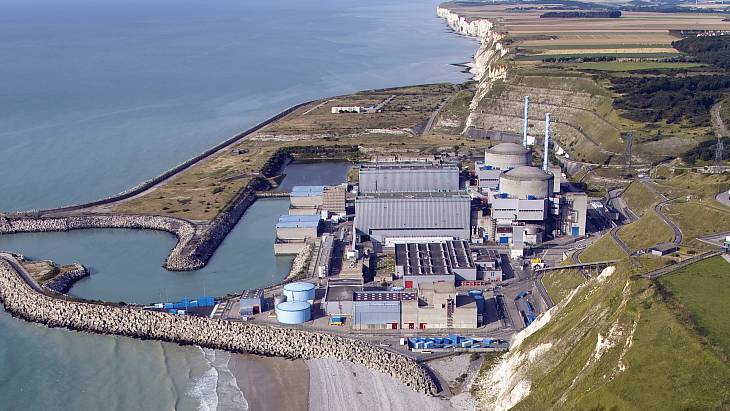
_23621.jpg)
